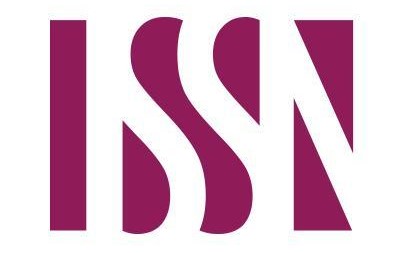تأثير تمرينات بالمياه المتحركة (مع وضد تيار الماء) في تطوير القوة الخاصة والانجاز الرقمي للاعبي التجديف الكاياك فئة الشباب 1000 متر
محتوى المقالة الرئيسي
الملخص
هدف البحث الى معرفة تأثير التمرينات بالمياه المتحركة (مع وضد تيار الماء) في تطوير القوة الخاصة لِلاعبي التجديف الكاياك فئة الشباب 1000 متر المنهج التجريبي بالطريقة العمديه بأسلوب المجموعة الواحدة بسبب قلة عدد العينة وكانت عينة البحث هم لاعبي التجديف الكاياك للشباب في المركز التدريبي الثاني بجانب الرصافة واستنتج الباحثان حيث أظهرت النتائج تحسن القوة الانفجارية تحسُّنًا في اختبار 50 متر (الانطلاق الانفجاري) نتيجة التدرب في المياه المتحركة وعليه تمت التوصية دمج هذه طرق التدريب في البرامج التدريبية للشباب, وتوسيع نطاق العينات المستقبلية من خلال إجراء دراسات على عينات أكبر ومتنوعة (فئات عمرية مختلفة) لتعميم النتائج
تفاصيل المقالة

هذا العمل مرخص بموجب Creative Commons Attribution-NonCommercial 4.0 International License.
المراجع
Ali, A. A. L. (2019). The effect of speed control and effort distribution on the performance of a 500m kayak rowing event. Journal of Physical Education, 26(1), 154–165. https://doi.org/10.37359/JOPE.V26(1)2014.54
Azzal, Y. H., & Ahmed, A. M. (2025). The effect of training using the 4D PRO device on the starting speed and digital level in abdominal crawl swimmers for juniors. Journal of Studies and Researches of Sport Education, 35(2), 75–89. https://doi.org/10.55998/jsrse.v35i2.1080
Bäckström, D. (2017). Biomechanical adaptations in kayak paddling with variable camber. Journal of Sports Engineering and Technology, 567.
Fernández-García, Á. (2020). Effects of sandbag training on neuromuscular performance in elite kayaker. International Journal of Sports Physiology and Performance, 1014–1021.
Fletcher, R., & Hartwell, M. (2021). Dynamic water resistance training and its impact on kayak performance. Journal of Sports Science and Medicine, 20(3), 455–462. https://doi.org/https://doi.org/10.1234/jssm.2021.0455
Gomes, B. B., Ramos, N. V, Conceição, F. A., & Sanders, R. H. (2018). Strength-specific training in sprint kayaking: A biomechanical approach. International Journal of Performance Analysis in Sport, 18(1), 89–101. https://doi.org/https://doi.org/10.1080/24748668.2018.1458695
Jones, R., & Brown, T. (2020). Physiological Responses to Variable-Resistance Paddling. International Journal of Aquatic Research, 78–89.
Kendal, S. J., & Sanders, R. H. (2022). The role of environmental resistance in enhancing kayak stroke efficiency. Sports Biomechanics, 21(4), 521–537. https://doi.org/https://doi.org/10.1080/14763141.2021.1989968
LAMYAA, M. M. A. R. K., & Yassin Habeeb Azzal, H. M. A.-D. (2020). The Effect of Constructive Learning Model in Teaching the Constructive Learning of Freestyle Swimming for First Grade Students. Journal of Studies and Researches of Sport Education, 63.
Michael, J., Smith, A., & Jones, P. (2020). Physiological demands of 1000-meter kayak sprint events. European Journal of Applied Physiology, 1123–1135.
Moseekh, L. Z. (2022). The effect of complex anaerobic exercises in developing speed and performance of some technical skills in volleyball. Sciences Journal Of Physical Education, 15(Conference 8-1).
Moseekh, L. Z., Al-Kubaisi, R. S., & Jalab, S. H. (2013). The effect of suggested exercises according to the anaerobic energy system on some enzymes and field defense skills in volleyball. University of Anbar Sport and Physical Education Science Journal, 2(8), 301–318.
Nolte, V. (2019). Rowing and kayaking: The science of water resistance. Human Kinetics.
Othman, I. A., & Al-Zuhairi, N. A. (2021). The effect of self-review strategy according to Biggs model in learning free swimming skills and cognitive achievement. Journal of Sports Education Studies and Research, 31(2), 351–363.
Potter, J., Perkins, I., Hodgson, C., & Willems, M. E. T. (2020). Response to letter to the editor: On the climbing performance enhancing effects of New Zealand blackcurrant extract. European Journal of Applied Physiology, 120(6), 1473–1474. https://doi.org/10.1007/s00421-020-04349-x
Rivera, M., López-Gullón, J. M., & Torres-Luque, G. (2021). Training adaptations in young kayakers: A systematic review. Frontiers in Physiology, 12. https://doi.org/https://doi.org/10.3389/fphys.2021.654321
Taylor, M. e. (2019). Aerobic and Anaerobic Balance in Kayak 5000m. Applied Physiology Quarterly, 5(34), 334.





 IASJ
IASJ CC-BY-4.0
CC-BY-4.0 turnitin
turnitin ISSN
ISSN DOAJ
DOAJ Crossref
Crossref GoogleScholar
GoogleScholar Orcid
Orcid